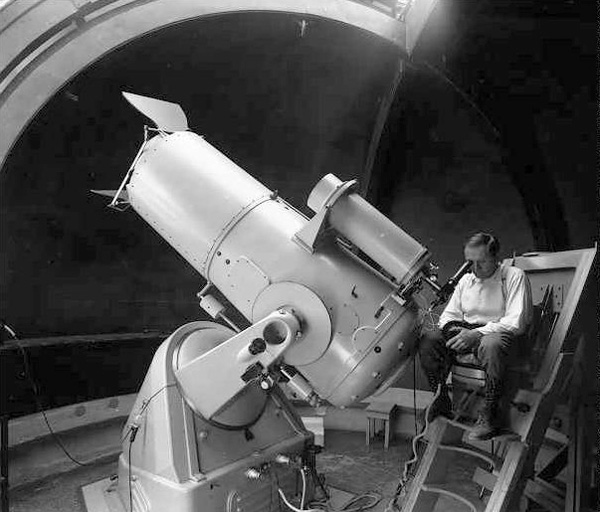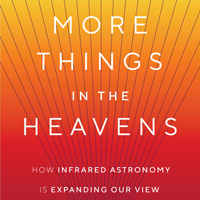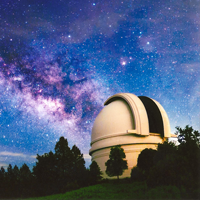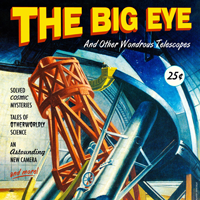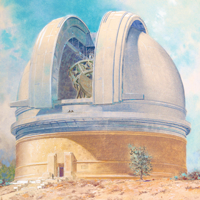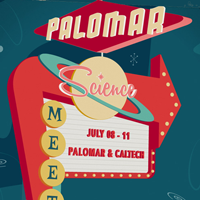Friends of Palomar Observatory Website
Upcoming Events

The Newsletter of the Friends of Palomar Observatory, Vol. 9 No. 3 – September 2014
Griffith Observatory
By Steve Flanders

Griffith Observatory (M. Field)
When we do the tours at Palomar Observatory, several of the docents often begin by asking the tour members if anyone has ever been to Griffith Observatory in Los Angeles. In response, a scattering of hands will regularly go up; sometimes quite a few people report that they have been to Griffith Observatory.
The question is intended to begin the story of Palomar Observatory by setting up a contrast: Palomar is a working astronomical observatory conducting scientific research on average 300 nights a year; Griffith Observatory was built as an educational institution and it continues to provide public outreach services to those interested in astronomy throughout southern California.
The contrast is evident simply in the choices that were made for the locations of the two observatories. In the 1930s, Palomar Mountain was a remote location and the site selected for the Observatory was at the time one of the darkest in the country—Palomar was far from any center of population. But Griffith Observatory, designed by engineers from Caltech and Mount Wilson and opened on May 14, 1935, was placed near the center of a growing and even then quite bright city of Los Angeles. With telescopes and a planetarium, it was built at the regional center of population where many would be able to get to it.
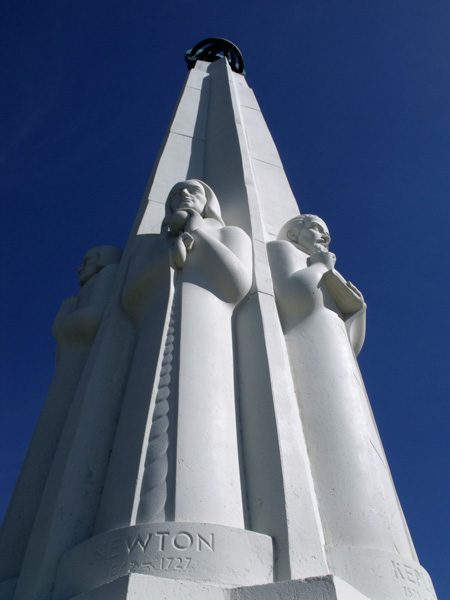
Griffith's Astronomers Monument. (A. Mejía)
The contrast is expressed in lots of other ways. Palomar is very much an industrial operation although one of a very particular sort. When we begin a tour at Palomar, we ask our guests to stay together and to not touch anything. There are containers of liquid nitrogen and often there are electrical cables running across the floor. The Observatory was not built to encourage visits from large groups.
In this regard Griffith Observatory contrasts with Palomar in almost every way. The great W. M. Keck Foundation Central Rotunda stands at the junction of two long hallways. Containing murals by Hugo Ballin, the rotunda features a recently restored Foucault Pendulum that uses a 240-pound brass ball on a 40-foot cable to demonstrate the turning of Earth. It is one of the largest such pendulums in the world.
There are exhibits on either side of the rotunda. Located on the main level in the east wing, the Wilder Hall of the Eye is concerned with astronomical tools and how these tools have evolved over time. The Ahmanson Hall of the Sky is housed in the west wing, on the opposite side. The exhibits there are concerned with objects that we regularly see in the sky—the Sun, the Moon, and the planets.
The 300-seat Samuel Oschin Planetarium is located on the main level past the rotunda. Upgraded as part of the general renovation that took place between 2002 and 2006, the planetarium features a Zeiss Universarium Mark IX projector as well as a Digistar 3 digital projector. The aluminum dome is 75 feet across.
A 150-foot long corridor known as The Cosmic Connection joins the main building with the underground exhibits on the lower level. This area is concerned with the history of the Universe and with creating a visual representation of the vast intervals of time that have passed since the Big Bang.
The lower level of the observatory features two exhibit areas, The Edge of Space Exhibit and the Gunther Depths of Space Exhibit. The first contains what may be the largest astronomical image in existence—a 150-foot by 20-foot photograph of a portion of the Virgo cluster of galaxies. The second exhibit area contains a scale model of the Solar System. These two exhibits are adjacent to the Stellar Emporium Gift Shop. The Café at the End of the Universe is located next door to the Gunther Exhibit.
Between these two exhibit spaces is located the centerpiece of the lower level, the Leonard Nimoy Event Horizon Theater. This presentation theater is used largely to support the educational objectives of the observatory.
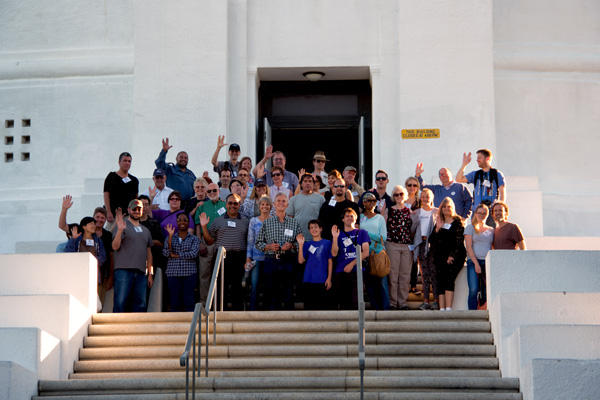
Griffith's Friends of the Observatory group visit to Palomar last August (T. Duncan)
To reinforce our point, while mutually concerned with astronomy, Palomar and Griffith observatories are very different institutions—one conducting a continuing program of scientific research, the other conducting a continuing program of public outreach and education.
Nevertheless, we must point out that there is at least one striking similarity. Both Palomar and Griffith have “friends” organizations, the Friends of the Observatory at Griffith and the Friends of Palomar Observatory here. And now these organizations are working to establish a set of mutual relationships.
In August, The Friends of the Observatory came to Palomar for a docent-led evening tour of the 200-inch Hale Telescope, dinner and a set of presentations at our Outreach Center followed by a star party on the basketball court behind the annex to the old school buildings. Forty-five people attended a particularly outstanding tour of the Hale Telescope. Later, there were still lines at the telescopes out back when the bus was ready to leave soon after 10:00 PM.
Now, the Friends of Palomar Observatory will be going to an event at Griffith Observatory. We have been invited to participate in a guided tour of Griffith Observatory on Saturday September 27 starting at 10:00 am. There is plenty of free parking at the observatory and we will meet in the Central Rotunda. More information on the program will be sent out just before the event.
The Zwicky Transient Facility
By Andy Boden
Palomar Observatory is really excited to announce that the Zwicky Transient Facility is coming to Palomar in 2017! But I am getting ahead of myself...
Over the past decade the global astronomical community has gotten really excited about “transient astronomy.” A transient is an astronomical source that changes apparent brightness and/or position over time. The first known transient objects in the sky were the sister objects in the Solar System—the Moon, planets, comets, and asteroids that all appeared to move with respect to the fixed stars (in fact most of you probably know that the word planet itself is derived from the ancient Greek for wandering star). Palomar has a rich history in transient astronomy dating back to surveys conducted by the Palomar 18- and 48-inch Schmidt telescopes (the 48-inch Schmidt was later rededicated as the Samuel Oschin Telescope) that were prolific in detecting new supernovae, comets, and other variable sources. These surveys began in the 1930s and among the most accomplished of the early Palomar observers was Caltech's Fritz Zwicky, who by himself is credited with discovering 120 supernovae—only one of his many extraordinary accomplishments.
Fast forward to 2009, when Caltech led an international team in a new experiment combining a modern CCD-based camera on the Samuel Oschin telescope, and the robotic photometry camera on the Palomar 60-inch telescope into an ambitious project called the Palomar Transient Factory (PTF). Since 2009 PTF—and a follow-on project “intermediate PTF”—have discovered tens of thousands of new transient sources including thousands of new supernovae, novae and cataclysmic variable stars, flaring young stars (thought to be driven by intense episodes of accretion as the young star is still forming), and the first-ever detection of a planet orbiting a young star in Orion—giving us a new window into the early planet formation process (and the subject of a talk at a recent Friends event). The stunning success of the PTF concept is that all the telescopes at Palomar can be brought together to work as a single integrated system in identifying and studying new transient sources.
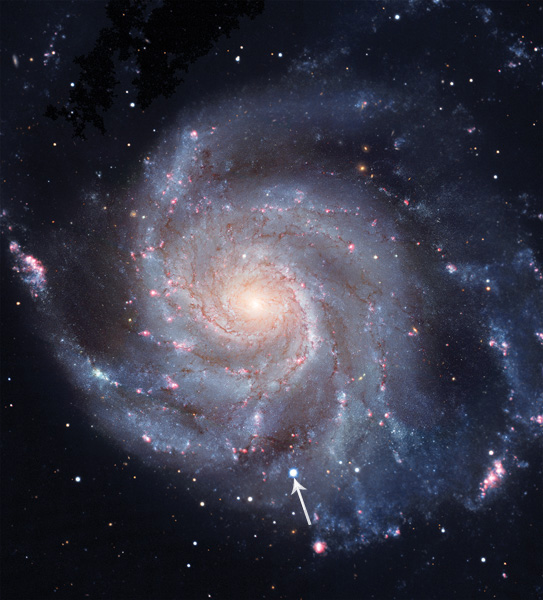
Supernova SN2011fe in the Pinwheel Galaxy (M101), the closest supernova type Ia observed in decades, was discovered by the Palomar Transient Factory just hours after its explosion. (B.J.Fulton/LCOGT/Caltech)
PTF and iPTF have been so successful that the core PTF team wanted to build an even more ambitious survey instrument—the Zwicky Transient Facility (ZTF, named to recognize the pioneering transient work by Zwicky). The key element in ZTF is a new camera for the Oschin Telescope—one that samples the entire available focal surface (the present iPTF camera is roughly a factor of five smaller than that envisioned by ZTF). The cost of the camera alone is daunting—roughly 10 million dollars. So we are extremely excited to share that ZTF was selected by the National Science Foundation for an award from its Mid-Scale Innovations Program (MSIP). This MSIP award will allow us to make ZTF a reality; we are already well into the design work and procurement of long-lead items like the large-format CCD detectors that will make ZTF possible. Through this award ZTF data will be available to all astronomers word-wide, and we are excited to add the U.S. national astronomy community to our ZTF partnership. If all proceeds according to plan, the existing iPTF project will continue operations through October 2016, and in early 2017 the new ZTF camera will be installed and commissioned on the Oschin telescope. By mid-2017 the ZTF project should start a three year operations phase, returning a treasure trove of new astronomical data and building on the transient astronomy legacy that Zwicky started at Palomar nearly 80 years ago.
Frequently Asked Questions
On our public tours we emphasize the longevity of the Hale Telescope in particular and of Palomar Observatory in general. The telescope and its mounting were designed in the 1930s by people using slide rules and trig tables and has been in service since 1949.
How can it be that this telescope is still doing important scientific work after 65 years? Yes, it was the largest effective telescope in the world until the Keck telescopes came on line beginning in May 1993. But now there are quite a few larger telescopes. Given that they have other choices, why do astronomers keep coming back to the old Hale Telescope? In an era where everything is disposable, what keeps Palomar Observatory going?
As you might expect, in one form or another, this question comes up on every tour. And rather than a single simple answer, there are many answers none of which are particularly simple. We emphasize the quality of the engineering and the building. Most especially, we emphasize the superb maintenance that has been done on the telescope during its 65-year life. We talk about the quality of the optics and the precision of its equatorial mounting. We never fail to note that the detectors on the Hale Telescope are always being upgraded and that we have some of the finest cameras in the world on this telescope at the moment.
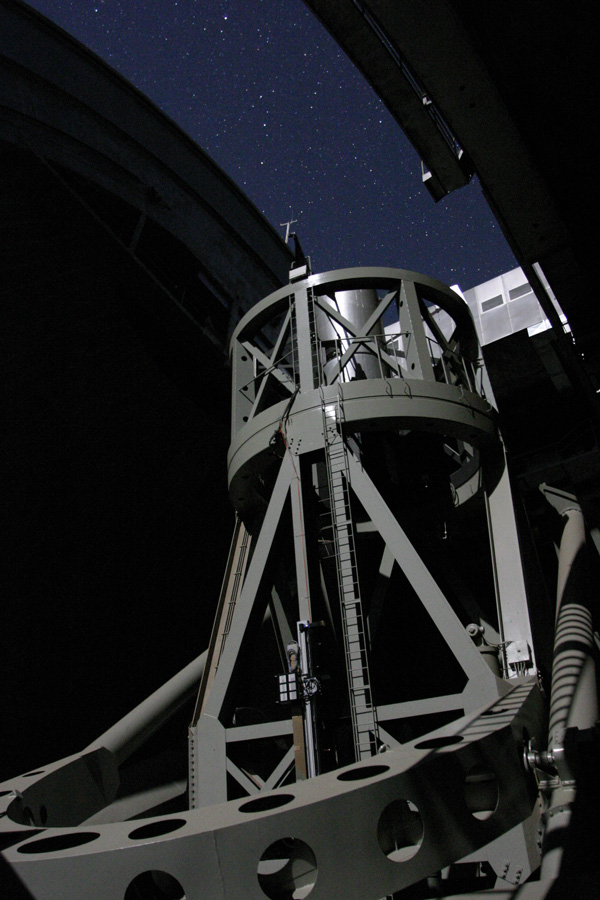
The 200-inch Hale Telescope. (Palomar/Caltech)
But there are aspects to this question that are a bit difficult to describe in the context of public tour. What allows Palomar to retain a leadership role? It has a lot to do with the technology and the engineering, the objective parts of the issue but it also has a great deal to do with matters that take a lot longer to describe, especially relationships among people and between technologies.
We don’t often have time to get into these sorts of concerns on the public tours. Even so, let me try to summarize at least one important aspect of the relationships I’m thinking of.
Of course, astronomers like metaphors just as we all do. And the metaphor I have in mind here of the “three-legged-stool”. In fact, there are three complementary facets to Palomar’s strategic mission. First, we support research in astronomy and astrophysics at the highest levels of the profession. The docents explain to their audiences that the Hale Telescope does research on average about 300 nights a year. But there is another side to this that is more difficult to explain. It is not just that we open virtually every favorable night, it is that, barring certain maintenance activities, the staff prepares the telescope and has it ready for the astronomer 363 nights a year. Without fail, we are ready to be “on the sky” as evening falls after sunset.
And the astronomers respond to the effort. Time on the telescope is allocated in 6-month intervals and we are always fully booked.
Clearly, support for research is the key element in Caltech’s strategic mission. But there are at least two other aspects to the fulfillment of this mission that form the other two legs of the stool. So the second leg arises from the fact that in order to support research you need to train people to conduct the research. Easily accessible and with a crew well versed in supporting the instruments, Palomar gives graduate and undergraduate students hands on experience in the process of conducting astronomical research. Over the past six months a considerable number of the primary investigators on the telescope have been graduate students from the sponsoring institutions.
The third leg then has to do with the technology. Cameras that are able to image planets orbiting distant stars are not simply invented. Rather, they are developed and they evolve over time in an iterative engineering process. And this telescope is perfect for this type of development. As one staff member has argued, the Hale Telescope occupies a “sweet spot”, a unique intersection of size and location and other factors that allows this facility to be nimble in its response to the needs of the engineers and the astronomers.
At Palomar Observatory, we are confident that these three strategic “legs”—research, training, and engineering combined with a vibrant outreach program—will keep this institution in a leadership position for many years to come.
Palomar’s New Website
Palomar Observatory is pleased to announce the launch of its new website www.astro.caltech.edu/palomar (and its alternative URL palomar-observatory.org). As some of you might have noticed, we began back in mid-April of this year by updating the information on logistics for visiting the Observatory. We continued in mid-June with the launch of a section dedicated to the people that make Palomar special, including yourselves, our esteemed Friends. This second website section, called Community, incorporates a revamped Friends of Palomar Observatory page. One of its new features is a repository of Big Eye newsletters going all the way back to the first issue. The format of the newsletters themselves has changed for what we hope is a friendlier, more portable format. At the end of August, we launched a section about the Observatory itself, its mission, telescopes, history, and major scientific achievements. We also redesigned the website's homepage and branding. More content, including a section dedicated to images and media, is in the works.
We hope you find our new website content and presentation informative, interesting, appealing, and easy to navigate. We would like to hear your thoughts about the new website, please email comments to palomar-info [at] astro.caltech.edu. And don't forget to bookmark www.astro.caltech.edu/palomar and www.astro.caltech.edu/palomar/community/friends.html.
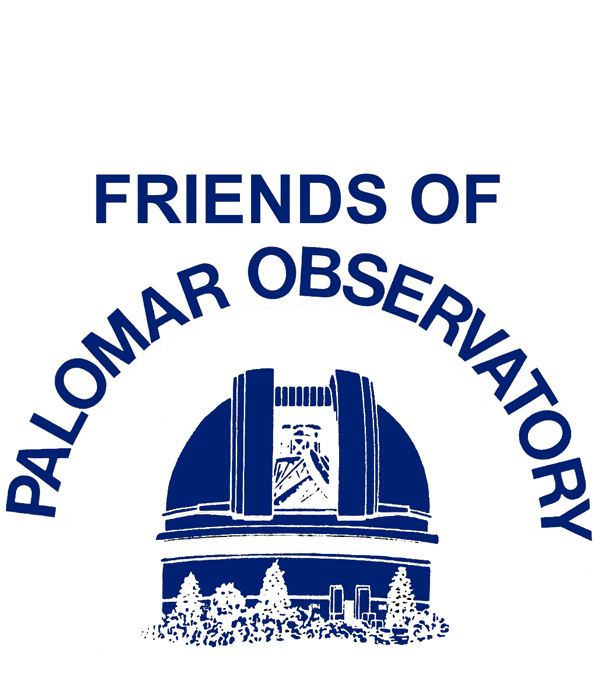
Questions? We've answered many common visiting, media, and academic questions in our public FAQ page.
Please share your feedback on this page at the
COO Feedback portal.
Big Eye 9-3
Last updated: 9 September 2014 AFB/SBF/ACM
